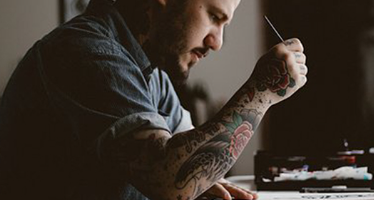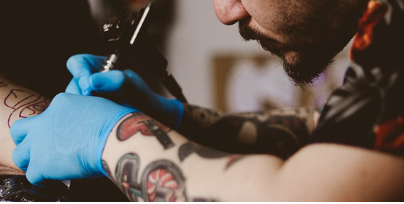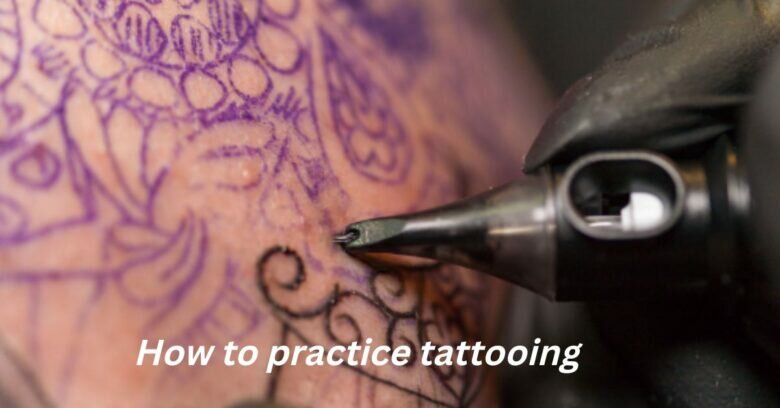Practicing tattooing as an apprentice is essential to becoming a skilled tattoo artist. When starting, it’s important to have patience and a willingness to learn, as it takes time to master the craft. There are several ways to practice tattooing as an apprentice, including learning from experienced tattoo artists, practicing on artificial skin, and using a tattoo machine on fruit or other objects.
It’s also essential to study the anatomy of the skin and understand the proper techniques for preparing the skin and sterilizing equipment. As an apprentice, it’s essential always to follow safety protocols and to seek guidance and supervision from a mentor. Dedication and practice make it possible to become a proficient tattoo artist and create beautiful, meaningful tattoos for clients.
The best method to begin a successful career in the field is undoubtedly through an apprenticeship, but obtaining one is complex. (If you still need to get an apprenticeship, read our blog on How to Get Tattoo Training.) If you’ve managed to get one, you’ll have a seasoned professional ready to share their knowledge, everything from the best tattoo machines to which needles you should use.
1. Draw as much as you can
Every artist we meet with has the same advice for us: keep drawing! This is the best and most famous advice for tattoo artists just starting. Julian Siebert, the proprietor of Munich’s Corpsepainter, was our source. He advises drawing frequently and in a variety of techniques.
An interest aids academic solid motivation and potential for future artistic success in the arts.
Also, practice tracing. Many tattoo artists practice drawing by initially tracing easy tattoos on paper. This is a fantastic technique to practice maintaining hand steadiness and feeling comfortable applying a design on the skin.

2. Practice on fruit or pork skin
As previously said, it is typical for beginners to practice with fruit; the most common fruits are oranges, grapefruits, and occasionally bananas. Pig skin, often known as “practice skin,” is another option for tattooing instead of human skin.
Fruit and pigskin are both acceptable starting points but could be better, according to Lianne Moule, who has been tattooing and honing her craft on both for more than ten years. Because pigskin is rougher than fruit, she claims, “Neither are ideal because they’re not made of human skin.” That’s why it’s crucial to bear that in mind when training.

3. Get to know your equipment
Lianne continued by saying that she occasionally would simulate tattoos while practicing her drawings. Lianne claimed her husband’s advice to affix a coil machine to the end of her pencil was tremendously beneficial in helping her get used to the weight. Her husband has been tattooing for more than 20 years.
Lianne also says she sometimes practiced drawing like she was tattooing. Her husband, who has been tattooing for more than 20 years, suggested that she attach a coil machine to the end of her pen, which Lianne says was very helpful in adjusting to the weight.
There are also plenty of online resources that can help you – we have a selection of blogs for trainees that cover topics such as tattoo needle guides and an overview of the two main types of tattoo machines: rotary vs. coil. Worth reading!
Read this: What Are The 3 Reasons People Get Tattoos?
4. Get a tattoo
Getting a tattoo allows you to see firsthand how other artists work. It’s an excellent opportunity to ask questions and learn how other tattoo artists practiced when they first started. Most artists will be happy to advise you.
When you get a tattoo, you also learn more about the style from your tattoo artist, who could help you find your style as an artist.
5. Tattoo your friends, family, or yourself with guidance
Practicing tattooing can be challenging, as you should not tattoo friends or family members unsupervised despite your permission. It’s frowned upon in the industry to take matters into your own hands, even if it’s on yourself. Not only does it show a lack of respect for the art of tattooing, but it is also hazardous. If you leave a tattoo unsupervised, you could seriously injure yourself or someone else due to the risk of infection and permanent scarring.
As part of your training, it is recommended that you practice tattooing on friends or family members under the guidance of an experienced artist, as this will teach you how to work with natural human skin. It’s also a rite when you get one of your first tattoos done on yourself, creating a timeless keepsake!
“I tattooed the entire inside of my right lower leg before tattooing my friends and my dad.”

Conclusion:
Whatever you do to practice, remember that you will never stop learning to be a tattoo artist. So do your research, and educate yourself about tattooing and what it takes to be a good artist – including the different types of machines you can use. These things are essential to go from tattoo apprentice to tattoo artist.

